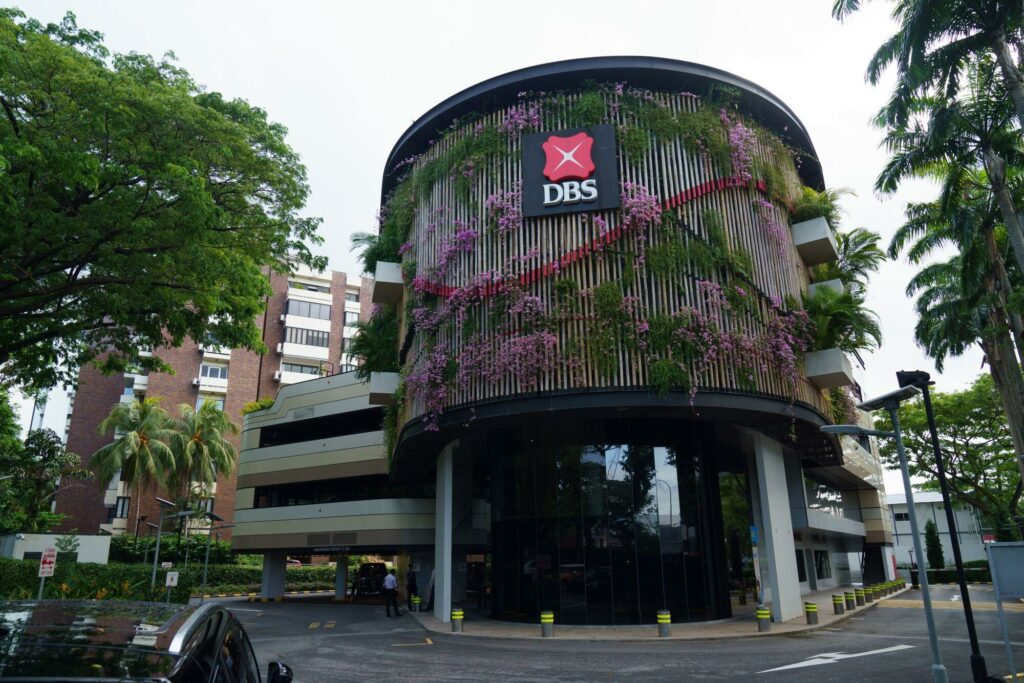How does DBS’s blockchain-powered tokens pilot project enhance liquidity management for corporate clients?
Revolutionizing Treasury and Liquidity Management with DBS’s Blockchain-Powered Tokens Pilot
Blockchain technology has been revolutionizing various industries in recent years, and now it’s making waves in the world of treasury and liquidity management. DBS, a leading financial services group in Asia, has recently announced a groundbreaking pilot project involving blockchain-powered tokens to streamline and enhance treasury and liquidity management processes.
The Rise of Blockchain in Treasury and Liquidity Management
Traditional treasury and liquidity management processes often involve complex and time-consuming paperwork, along with the potential for errors and discrepancies. With the adoption of blockchain technology, these processes can be vastly improved, offering increased security, efficiency, and transparency.
DBS’s blockchain-powered tokens pilot project aims to leverage the benefits of blockchain to transform the way treasury and liquidity management is conducted, bringing about a new era of efficiency and reliability in these crucial financial operations.
How DBS’s Blockchain-Powered Tokens Pilot Works
The blockchain-powered tokens pilot project by DBS is designed to enhance liquidity management for corporate clients, providing them with real-time, 24/7 visibility of their balances and the ability to transact instantly, securely, and seamlessly.
By using blockchain-powered tokens, DBS aims to eliminate the need for traditional banking processes and intermediaries, allowing for direct and immediate transactions between parties. This not only reduces the risk of errors and delays but also offers greater transparency and control over treasury and liquidity management activities.
Benefits of DBS’s Blockchain-Powered Tokens Pilot
The adoption of blockchain-powered tokens for treasury and liquidity management offers a range of benefits for corporate clients, including:
- Real-time visibility of balances
- Instant and secure transactions
- Elimination of intermediaries and paperwork
- Enhanced transparency and control
- Reduced operational costs and risks
Practical Tips for Implementing Blockchain in Treasury Management
For organizations looking to leverage blockchain technology for treasury and liquidity management, there are several practical tips to keep in mind:
- Educate stakeholders on the benefits of blockchain
- Ensure alignment with regulatory requirements
- Collaborate with trusted partners and technology providers
- Conduct thorough testing and implementation strategies
- Stay informed about industry developments and best practices
Case Studies: Success Stories of Blockchain Adoption in Treasury Management
Several organizations have already embraced blockchain technology for treasury and liquidity management, achieving impressive results in terms of efficiency, security, and cost savings. Some notable case studies include:
| Company | Achievements |
|---|---|
| IBM | Streamlined cross-border payments and reconciliation processes |
| Maersk and IBM | Improved transparency and efficiency in global supply chain finance |
| HSBC | Successfully completed the world’s first commercially viable trade finance transaction using blockchain |
Firsthand Experience: Embracing Blockchain-Powered Tokens for Treasury Management
Organizations that have adopted blockchain-powered tokens for treasury management have reported significant improvements in efficiency, security, and visibility. By leveraging blockchain technology, they have been able to transform their treasury and liquidity management processes, paving the way for a more agile and transparent financial operation.
As the financial industry continues to recognize the potential of blockchain technology, the adoption of blockchain-powered tokens for treasury and liquidity management is expected to become more widespread, offering new opportunities for organizations to enhance their financial operations and stay ahead of the curve.
With DBS’s pioneering pilot project and the success stories of organizations that have embraced blockchain for treasury management, it’s clear that the future of treasury and liquidity management lies in the transformative power of blockchain technology.
the implementation of blockchain-powered tokens for treasury and liquidity management represents a significant step forward in the evolution of financial operations, offering unparalleled benefits in terms of efficiency, security, and transparency. Organizations that embrace this innovative technology stand to gain a competitive edge in today’s rapidly evolving financial landscape, setting the stage for a new era of agile and reliable treasury and liquidity management.
DBS recently announced the introduction of its blockchain-powered treasury tokens through a collaboration with Ant International, a digital payment and financial services provider. These tokens, enabled by DBS’ permissioned blockchain, are integrated with the bank’s core payments engine and utilize smart contracts and tokenisation to enhance banking efficiencies.
Businesses’ treasury needs have evolved due to the increasing prevalence of e-commerce and on-demand services available around-the-clock. As a result, the pilot launch of DBS treasury tokens aims to reduce settlement times for intra-group transactions from days to seconds, ultimately leading to more efficient treasury and liquidity management. This is especially beneficial for large companies managing payments across different time zones and currencies.
Furthermore, these new capabilities introduced by blockchain technology will also enhance transparency in fund movements between different bank accounts. This improvement in visibility, predictability, and control over cash positions will address challenges like reducing costs and transaction risks for cross-border payments.
The collaboration with Ant International is an important step forward in leveraging blockchain technology to address these challenges. It builds upon Ant International’s successful deployment of blockchain technology on their Whale platform for instant tax refund services and cross-border payments for small and medium enterprises.
The permissioned blockchain being used is compatible with the Ethereum virtual machine, providing opportunities for new capabilities in traditional banking services such as “programmable, fractionalised, atomic value transfer”. The pilot launch of DBS treasury tokens stems from the bank’s involvement in Project Orchid and Project Guardian led by the Monetary Authority of Singapore. These projects aim to test the benefits of tokenization – specifically enhancing liquidity and efficiency within financial markets through asset tokenisation.
In conclusion since 2016,DBS has been piloting transactions involving atomic settlement use cases with tokenized bank deposits
and securities which is one way they are participating under project guadianfyi
This recent breakthrough represents an important milestone not only for DBS but also for incorporating avant-garde technological solutions into traditional banking practices. By harnessing blockchain-powered treasury tokens alongside partnerships with industry players like Ant International,, it marks a clear advancement towards meeting modern business requirements amplified by digital evolution..
